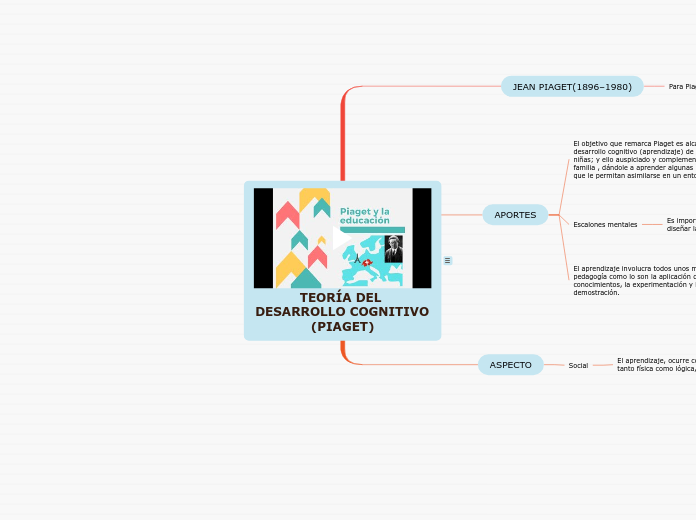par David Villaverde Il y a 4 années
2513
TEORÍA DEL DESARROLLO COGNITIVO (PIAGET)

par David Villaverde Il y a 4 années
2513

Plus de détails
REFERENCIAS
BIBLIOGRAFÍA
- Manual de psicología y desarrollo educativo , Grace J. Croig / Anita E. Woblfolk. México 1996.
- Psicología social de la personalidad, Kimball.

To name your story, you have to think about the overall message and what you want your audience to understand from the story. Also, make it relevant and easy to remember.
The ending of a story is essential. We all know that if the ending is weak, what happened before loses its importance. So make it unpredictable, but fair. A resolved ending answers all the questions and ties up any loose threads from the plot.
This is the moment when the main character surpasses the last obstacle and finally faces their greatest challenge.
The climax usually follows one of these patterns:
Type in your answer.
The middle of the story is where you add layers of complications that will lead to the end. Reveal more about the character's journey. Did their personality go through changes? How did they overcome the challenges? And as you build up the story’s central conflict, make it more personal to that character. Also, from the middle act, you have to lead into the final act.
There wouldn't be any tension and excitement in your story if there weren't any obstacles in your character's way.
A story is nothing more than a character overcoming a series of difficulties to reach the desired goal. Obstacles usually create suspense and conflict. In overcoming obstacles, there is growth: weak becomes strong; hatred turns into love; sadness into happiness; wrong into right; lies into truth; or evil becomes good.
See a few examples below:
Obstacles
Each story has a main character and that character usually needs to solve a problem or challenge. The character's challenge is the one that creates tension throughout the story.
Your character(s) need(s) motivation in order to solve the challenge(s).
El aprendizaje por descubrimiento activo es clave en la educación.
Secondary characters might also have motives that lead them to cross paths with the main character or which might trigger them to help the main character.
El conocimiento esta formado por esquemas que el niño o niña van construyendo a partir de su interacción o actividad en su ecosistema.
Why does your character need to confront this challenge? What does he/she expect to accomplish by solving it?
See a few examples:
In the beginning of the story (or the exposition), you will need to introduce the setting and characters. You might also want to introduce the main conflict. This part of the story is important because it gives the reader necessary background information and maybe even a first insight into a character’s personality.
Characters are essential to a good story. Usually, the protagonist(s) is/are the most affected by the plot. Introduce a character by focusing on their actions, interests, and occupation, as the physical appearance doesn't make a difference in most cases.